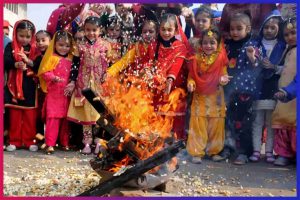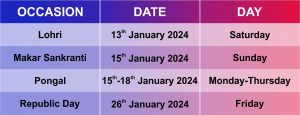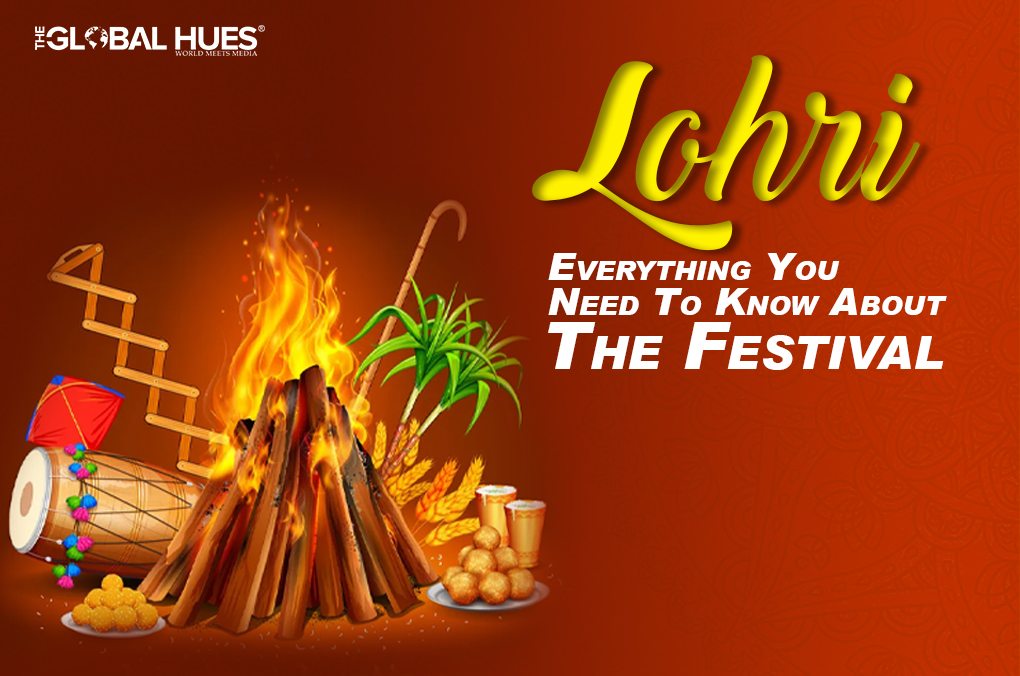Highlights
-
Lohri kickstarts the Rabi Crop harvest and is particularly important in Punjab.
-
As a part of the festivities, people gift the Fire God Gur (jaggery), Rewari (sweet preparation), and Mungfali (peanuts).
-
The celebration takes place in the evening and features get-togethers around bonfires, dancing, and group meals.

The cheerful and joyous festival of winter, Lohri is among the most popular festivals in Northern India. Lohri is considered a very prominent festival for the people in Punjab as it marks the start of the harvest season of the Rabi crop. Punjabis celebrate this festival by praying to the Fire God by making offerings of Gur, Rewari and Mungfali.
Every year on the 13th of January people celebrate the festival of Lohri. According to the Hindu calendar, Lohri comes in the month of ‘Magh’. People also call it the festival of Lohadi or Lal Loi.
People celebrate this festival with utmost joy by gathering around bonfires, dancing, eating rabri and mungfali and offering each other greetings. Lohri marks the end of the winter season and the onset of spring. This festival is all about paying gratitude to the almighty god, dancing to dhol beats and enjoying together.
People celebrate this festival with much more enthusiasm in those homes that have recently witnessed a marriage or the birth of a new child.
Significance of Lohri
As earlier stated, Lohri marks the beginning of the harvest season. People celebrate Lohri to offer their gratitude to the gods for the bounteous and happy harvest. Lohri is celebrated on the day before Makar Sankranti which traditionally falls on the winter solstice, the longest night of the year.
The festival of Lohri indicates the end of biting cold winter days and the beginning of warm and sunny days. The other reason to celebrate the Lohri is to pray to the Sun God so that god blesses with the appropriate warm weather that is beneficial for the crops. And the burning of a bonfire on Lohri symbolises the upcoming warmer days. As a sign of reverence to the Fire God, people offer sweets made from jaggery, sesame, til, peanuts and many more.
The Lohri Rituals
Lohri is celebrated on the 13th of January evening in an open space such as the veranda, terrace or backyard of the house. People wear new clothes and jewellery on this occasion. Around the lightning bonfire, people do Gidda and Bhangra and sing Punjabi folk songs. The most popular folklore songs of the Lohri are Sunder Mundriye Ho, Tode Upper Toda, Til Cholliye Ni and Sanu De Lohri.
Lohri gives people the opportunity to come closer to their relatives and friends. Dancing, singing and eating together, this festival fosters a sense of fellowship and oneness among people. The celebration of Lohri ends with the giant feast in which ‘Sarso da Saag’ and ‘Makke di Roti’is the most popular Punjabi dish.
The Mythological Reason
There is a mythological tale behind Lohri. The tale revolves around Dulla who was a dacoit. Dulla lived in Punjab’s Mughal area and was known for saving females from slavery. After saving the girls from the trap of slavery, Dulla helps them in arranging their marriages. Also known as ‘Robin Hood’ in the village, Dulla used to steal from the rich and help the poor with the same.
People admired Dulla because of his courageous nature. This story is popularly known as Sunder Mundriye. And that is why people sing the popular song “Sunder Mundriye Ho” on the occasion of Lohri.

The Essence of Lohri
Lohri fills the whole environment with joy, cheer and happiness. The auspicious festival has a deeper meaning of expressing gratitude and appreciation. With the bonfire symbolising the bright days ahead, this festival brings positivity, gratitude and hope. Lohri spreads the essence of happiness in the air.
Festivals/Days In January





